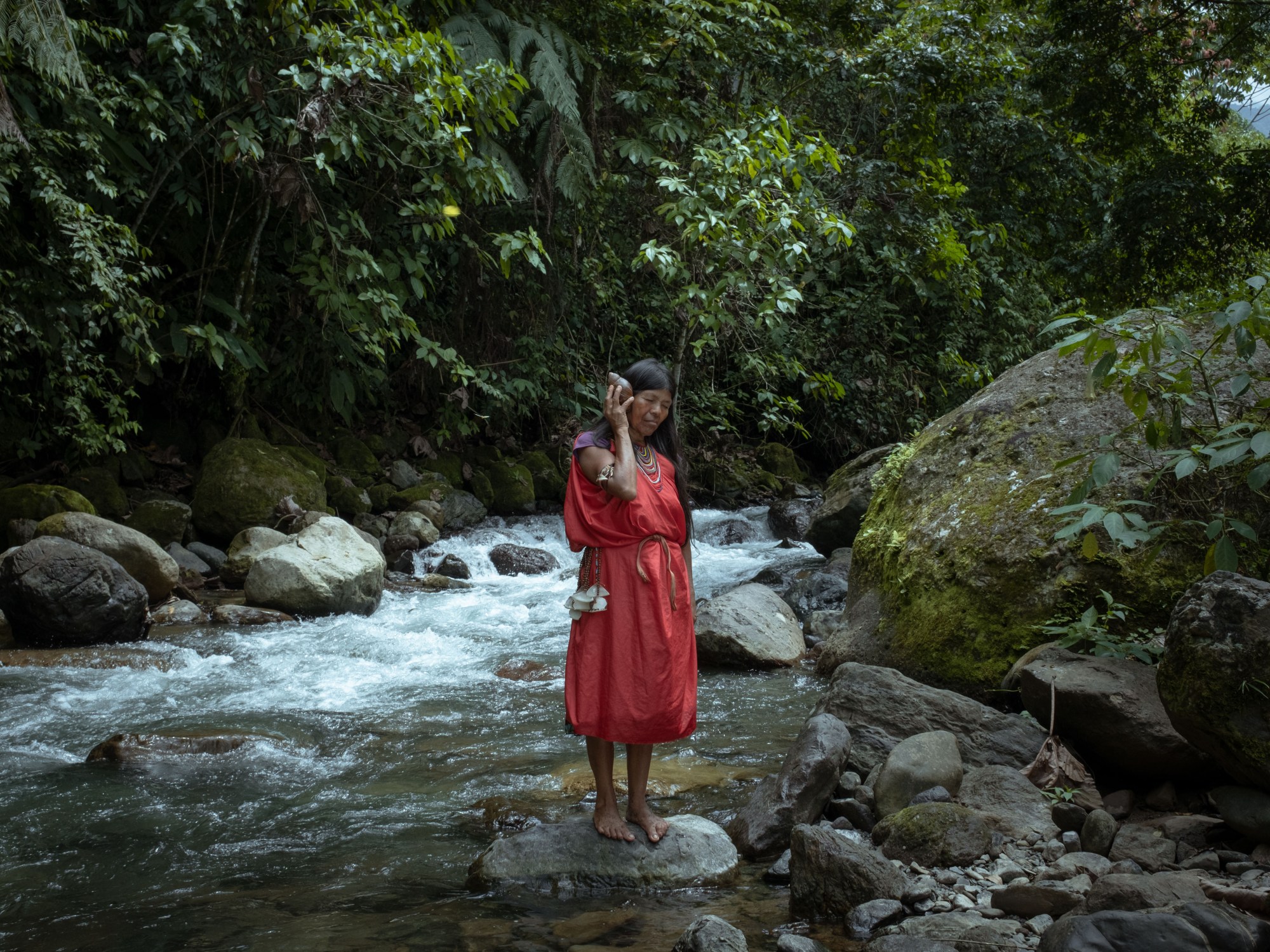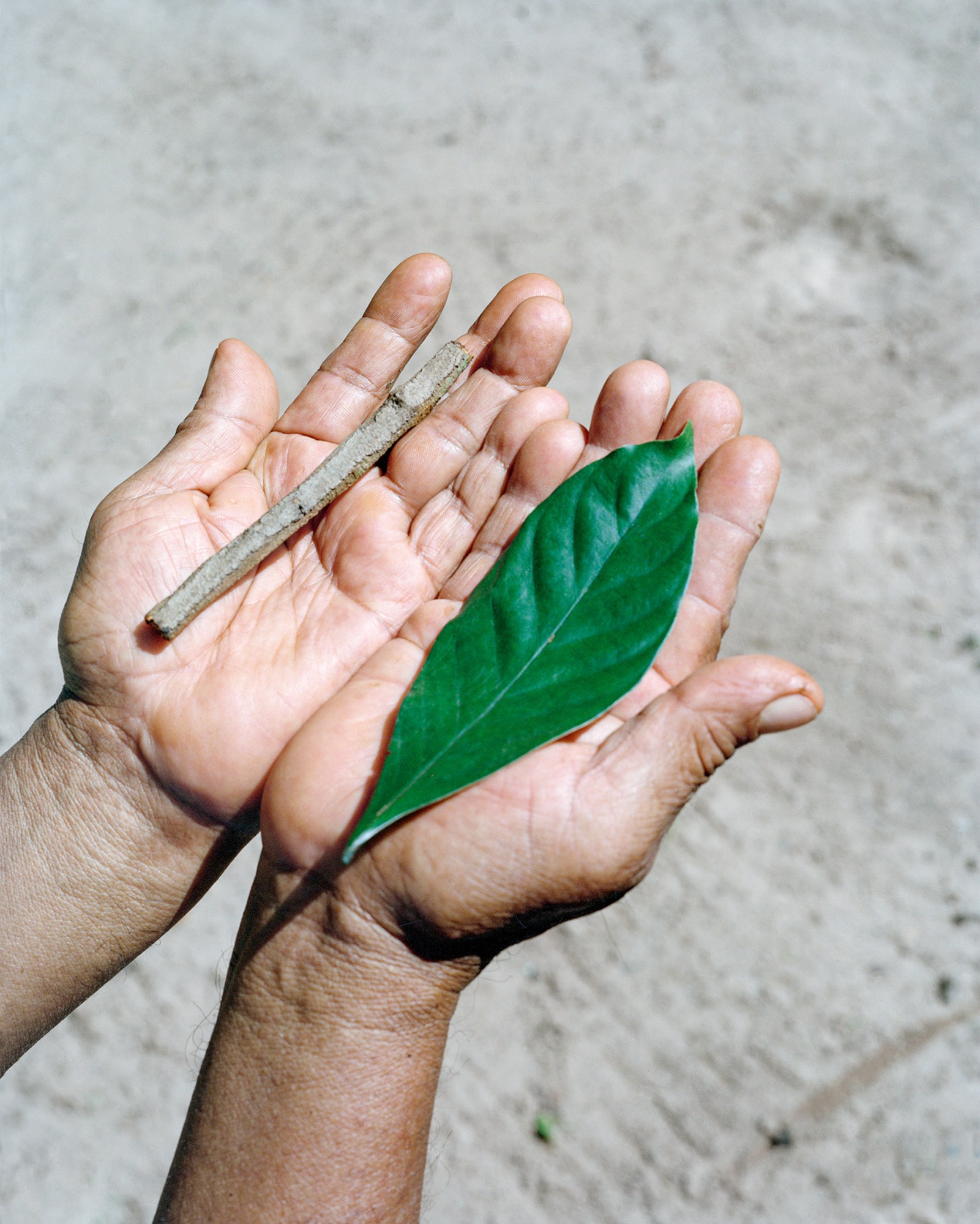From the earliest civilisations to the present day, humans have relied on the natural world for survival. This profound bond has evolved into one of mutualism, with plants providing sustenance, refuge and the air we breathe while humans have attended to plant life through habitat alteration and conservation efforts. With that being said, the propensity to act for the collective well-being of the living world seems… lacking.
Just last week, the average global air temperature reached record heights, prompting the UN secretary-general to echo warnings of the catastrophe that awaits us should we fail to act fast. Puerto Rican photographer Manuel Rivera-Ortiz was at his home in New York when everywhere from the city to the Ohio Valley was choked by an impenetrable crimson fog generated by Canadian wildfires. “At first, I wasn’t sure what it was,” the photographer shares from the courtyard of his eponymous non-profit foundation in Arles, France. “Outside, the atmosphere looked like an apocalyptic Hollywood movie.”
The sense that protecting our environment is an urgent moral imperative has only become mainstream in the past few years, but it has been Manuel’s concern for as long as he can remember. In line with his foundation’s mission – to support photographers that show humanity in motion – he has dedicated a new project to cultivating an awareness of our symbiotic relationship with nature.
Grow Up is a crucial photobook and exhibition exploring the many ways humans interact with plants, from the cultivation of crops to the healing properties of herbs. The project foregrounds images that challenge us to question what is sometimes overlooked and give space to the most vulnerable. Published to coincide with an exhibit at the Rencontres d’Arles – France’s annual photography festival – the book assembles the photographic positions of around 30 international artists, inviting us to consider the matrix of biodiversity and environmental tensions embedded within our society.
“In Grow Up, we pose this pressing question – ‘what do nature, plants and humanity mean to you?’” Manuel says. “It continues the theme that life is impossible without plants. Photosynthesis, nourishment, timber to build our homes, textiles to cover our backs, global warming threatens all of it. It’s a fragile ecosystem. We humans imagine that everything, including ourselves, live forever and that Mother Nature will always be our keeper. But history teaches us that she is not infallible, and she does hurt, and when she does, we all pay a dear price for having hurt her.”
For Manuel, plants elicit a curious recollection of the past. “For much of my childhood, Papá worked as a migrant in farms throughout New England,” he says. “He worked upwards of 70 hours a week for miserable pay, around $60 a week from which he sent Mamá – back in Puerto Rico – 20. Plants became the simple way to stay alive between those early memories and those after my Abuelita bought a farm in the mountains in the Cordillera Central rainforest. We all worked on Abuelita’s farm, growing coffee, vegetables, and fruits to sell at the market.”
The projects in Grow Up tease through similar local, territorial, and international relationships with nature. From the Amazon to Costa Rica to Taiwan, a relationship with plants remains central. Below, i-D spoke to six photographers featured in the book whose work visualises the richness of global cultures and their developed knowledge of botanic traditions.

Pepe Atocha, Ayañawi
Since February 2020, Peruvian photographer Pepe Atocha has been living and working in Tarapoto, on the high jungle plateau of the Amazon rainforest. During this time, the forest became his laboratory and tutor, encouraging him to experiment with fire and analogue photographic processes to create anti-digital images.
Ayañawi, meaning both ‘eye of the dead’ and ‘firefly’ in Quechua, presents his symbolic vision of the landscape. “I try to capture the essence of the jungle by working with its own energy,” Pepe says. “Fire, sunlight, moonlight and even fireflies; energies that together with the elements of the forest create unprecedented and unpredictable images.”
The series is composed of veiled portraits of trees as well as the indigenous Shipibo healers who shared ancestral wisdom of the invisible attributes of medicinal plants with Pepe during a three-week ayahuasca retreat.

Teo Belton and Florence Goupil, Cumbia’s Day
“Orality is the whisper of the Earth” is a sentence that is often heard in the most remote communities of the rainforest. In their documentary film Cumbia’s Day, storytellers Teo Belton and Florence Goupil access the living memory of native language, legends and botanical knowledge to underline the importance of preserving oral culture.
In Peru, over the last hundred years, thirty-seven indigenous languages have disappeared. The woman in this photo is Victoria Chamik. She is an Awajun indigenous woman from the Amazon who speaks very little Spanish and still preserves the “anen”, a magical song from her oral tradition that allows her to hunt, take care of plants, and even charm. Unfortunately, she won’t have much chance to pass it on.

“The indigenous people of the Amazon, like Victoria, are exposed to several paradigm shifts, with the arrival of Western culture, religion and the extractivist capitalist system in their territories,” Teo says. “The loss of cultural transmission has an impact on the new generations, where traditional songs or knowledge about medicinal plants disappears.”

Mathias de Lattre, Mother’s Therapy
About 10 years ago, Mathias de Lattre had the intuition that psychedelics might constitute an alternative to his mother’s psychiatric treatment. His research into psilocybin would guide him down the verdant Amazonian path, where he discovered that contemporary Western methods were slowly supplanting the ancient shamanistic medicinal rituals.
“Since ancient times, systems of initiation and transmission of knowledge have been established in traditional medicines,” Mathias says. “Behind the ‘folkloric’ appearances is an extreme rigour, a great demand for personal commitment and strict obedience to the teacher. New generations don’t necessarily want to commit such assiduous work ethics.”
During the pandemic, the picture of medicine in a globalised world in crisis encouraged Mathias to reflect further on the disparate logics of tradition and modernity in the field of health. “Traditional indigenous medicine, where shamanism often plays a key role,” he says, “appears at this juncture as a privileged environment for the analysis of new models around healing wellness.”

Mads Nissen, The Lost War on Cocaine
Despite what the gangster blockbusters of the late 80s may tell you, the golden age of cocaine wasn’t during Pablo Escobar’s reign as the drug kingpin; we’re living in it right now. Earlier this year, the World Drug Report 2023 found that global production was racing to match increased demand with a 35% increase in coca cultivation between 2020 and 2021.
Cocaine’s reputation as the world’s favourite party drug obscures the murky depths of the trade and the reality that, for those living in Columbia – the world’s largest grower of coca – the stimulant is synonymous with violence, corruption and death. “It’s obvious that the current war on drugs is not working,” says photographer Mads Nissen, who, in 2022, travelled to the country to chronicle the human impact of the drug. “It’s time to start a debate with fresh eyes and look for a policy that cares about the ordinary Colombians caught in this devastating illegal business.”
Mads worked closely with project manager and Columbian native Paola Devia Barco to expose the intrinsic links between her people, the country’s economy and the coca plant that lies at its heart. “Cocaine is such a large part of the economy that a significant part of the civilian population ends up being involved in the business – either by producing it, trafficking it or sometimes inactively assisting the trade until it’s shipped abroad,” Paola says.

Collectif Docks, A Year Along the Banks
The drastic fallout of climate change in the Global South is brought closer to home via documentary collective Docks’s series A Year Along the Banks. For a year, its five members recorded the places and people affected by the devastating flood disaster in Western Germany in July 2021. There was no adequate advance warning by authorities, and as a result, more than 180 people lost their lives, and thousands more lost their homes.
The stillness of the series, featuring homes deep in marshy rainfall and temporary rubbish collection sites, invites moments of pause and reflection. “Some people involved have questioned their interaction with nature as a result of the catastrophe, and many residents in the affected areas can no longer trust the force of nature; rainfall can be retraumatising for them,” says Docks photographer Fabian Ritter. “However, many of the people heavily affected were primarily concerned with standing on their own two feet again weeks and even months after the disaster.”

Verdiana Albano, surrounded
With a population of over 31 million, China’s Chongqing municipality is the world’s fastest-growing megalopolis. Colossal skyscrapers rise from the mouth of the Yangtze and Jialing rivers to sidle like sardines in the eerie landscape.
In Verdiana Albano’s image series surrounded, the photographer frames the cohabitation and unchecked growth of both the natural and unbuilt world, showing the city, enveloped by its notorious fog, from over 20 different perspectives. These strange and atmospheric shots illustrate an extreme idea of progress meeting a special phenomenon of nature.
“The region has always experienced this fog due to the inflow of the river, especially in months with high humidity,” Verdiana says. “However, with mechanical growth comes high carbon dioxide emissions, which are affecting the density of the fog. For me, this symbiosis of transformation, modernity and the dreamlike atmosphere is more cyberpunk reality than dystopian.”
Credits
All images courtesy of the artists

